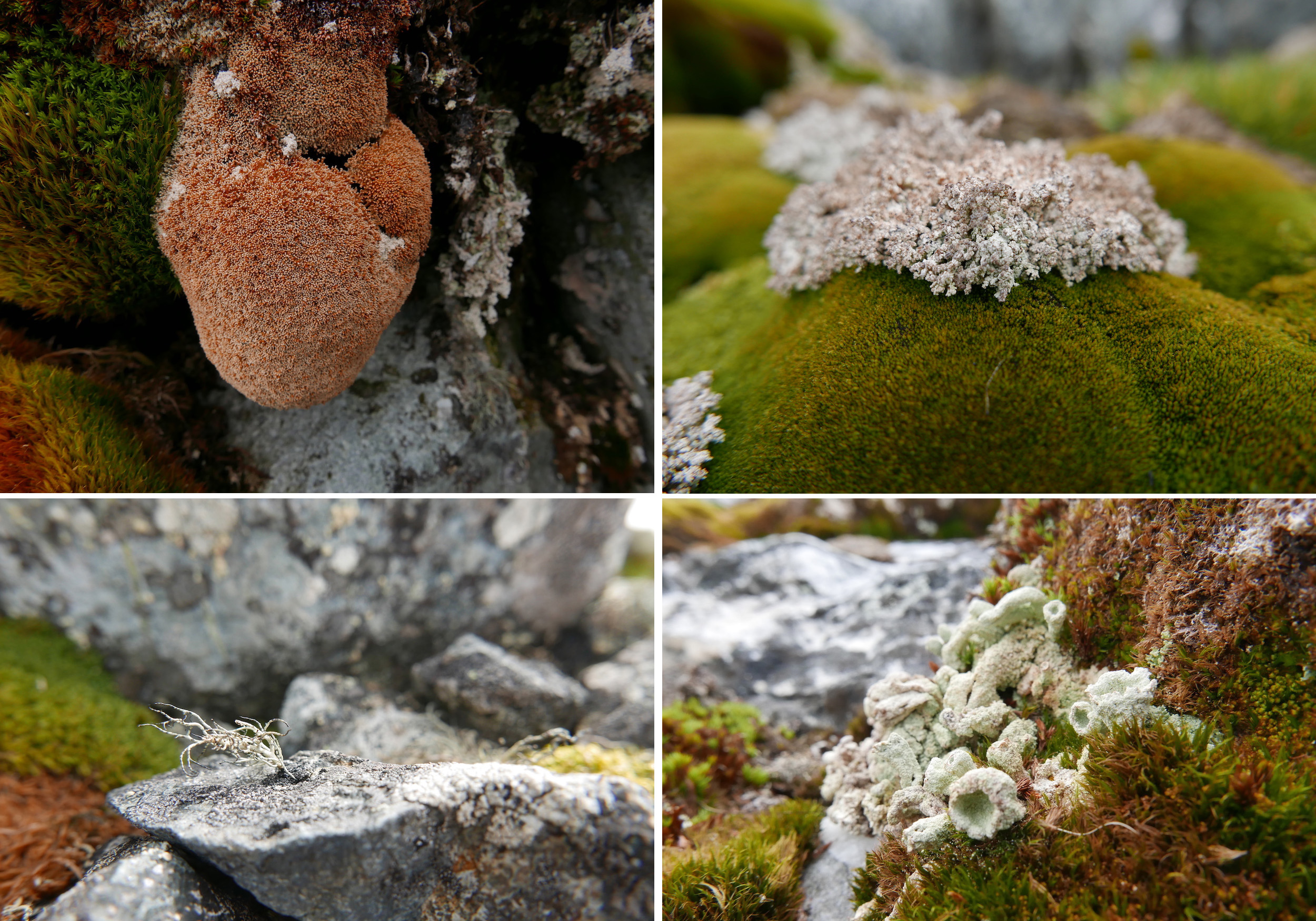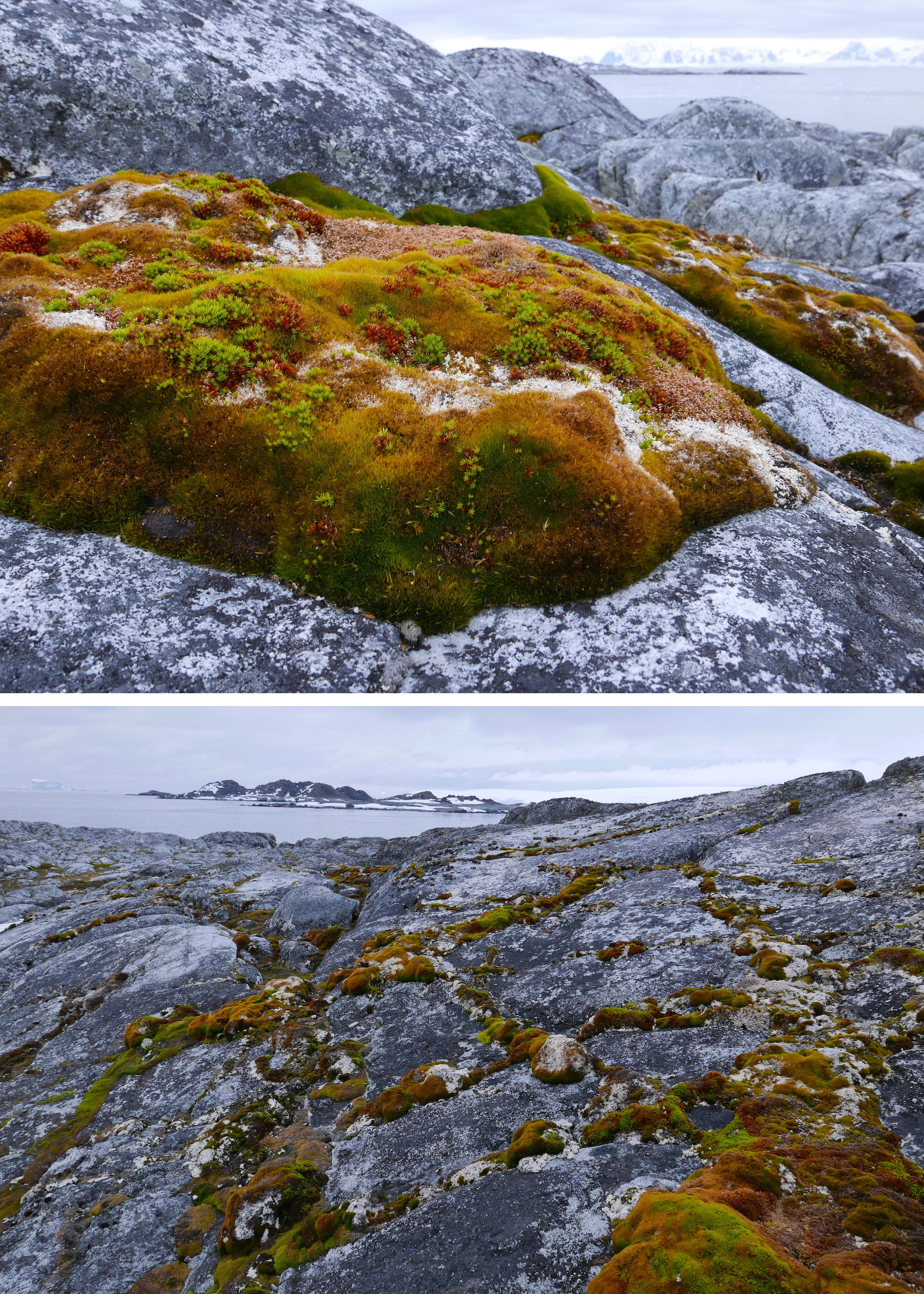Antarctic lichens - part II:
There are about 300 to 400 lichen species in Antarctica. The western Antarctic Peninsula, where Palmer Station is located, has the highest number of lichen species on the Antarctic continent. That is because this area is the warmest and wettest of the entire Antarctic continent.
Lichens have thrived here - they are the dominant vegetation on the Antarctic continent. I have seen lichen have the most incredible shapes, such as a heart-shape (see the fruticose lichen in the top left photo), or resemble cauliflower and grow directly on moss (top right photo), a tree-shape (see Usnea antarctica, bottom left photo), or have beautiful cup-shaped fruiting bodies (bottom right photo).

Lichens have several adaptations that allow them to survive the extreme environment here. They can:
- Photosynthesize far below freezing temperatures (at -20 oC).
- Take up water when the atmosphere is water-saturated (so, under very humid conditions).
- Survive drought periods by going into an inactive state.
Lichens are slow growers, only growing about 1 cm per 100 years. Thus, seeing large mats of them, one can only imagine how long ago they have started to grow. The thick carpets from Litchfield shown in yesterday’s blog thus provides evidence that Litchfield has remained ice-free for many hundreds (perhaps thousands) of years.
It is possible that moss growth may facilitate growth of certain lichen. Moss may start growing straight on rocks (see below, top photo) or in cracks where water may collect (bottom photo), thereby providing a substrate for these lichen. It is a sight to behold when you see the lichen-moss gardens in this area. They are species-diverse, beautifying an already beautiful landscape.
